Who Are On The Chinese Money - Banknotes and Coins
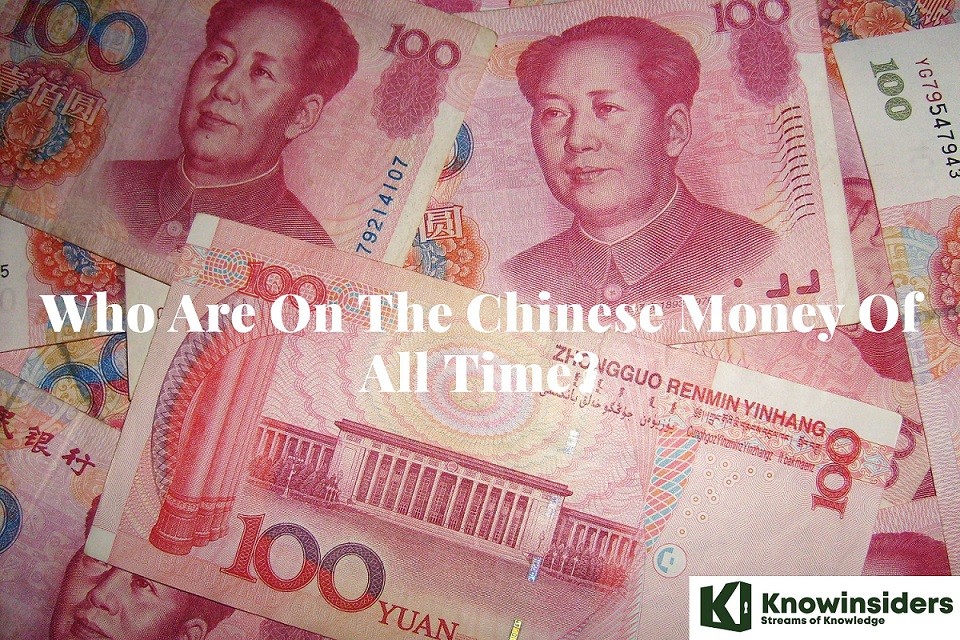 |
| Who Are On The Chinese Money Of All Time? |
| Summary |
For a variety of reasons, Chinese currency is a hot topic these days. It not only defines the state of one of the world's largest economic superpowers, but it is also central to one of China's most contentious issues today—its perceived mercantilist policy of artificially undervaluing its currency against the US dollar in order to give its exports an unfair price advantage.
The Chinese Yuan (CNY) and the People's Renminbi (RMB) are the two names for money in China. The distinction is subtle: while the renminbi is China's official currency, the yuan is its primary unit of account.
The History of the Chinese Yuan / Renminbi
When we speak of China, we are referring to one of the world's oldest and richest cultures, dating back thousands of years. The country was among the first to create currency to replace barter. As a result, its currency history is something that has a long interesting timeline enriched with curious facts that are definitely worth investigating further.
The Chinese were the first to use items as currency. China developed its barter system from these shells, introduced a wide variety of objects that could be used as money (fabrics and knives, for example), and later, bronze coins were created as substitutes for those objects.
The Yuan currency was introduced in 1889, inspired by the Spanish currency "peso." Because of the Spanish presence in Guan and the Philippines at the time, the peso was widely used in South East Asia. The government then began issuing other coins in the Yuan currency system in 1903. These were brass 1 cash coins, copper coins in denominations of 2, 5, 10, and 20, and silver coins in denominations of 1, 2, and 5 cash.
The modern Yuan (CNY), also known as the Renminbi (RMB), first appeared in 1949, with the establishment of the People's Bank of China. Renminbi translates as "people's currency," and new stages of the Yuan followed, such as in 1962, when a third version of the coin was issued.
Finally, the fourth Yuan series occurred between 1987 and 1997, coinciding with China's rapid development. The increase in retail sales in both rural and urban areas, as well as the country's opening-up policy, facilitated the implementation of reforms that benefited the currency. As a result, certain advancements and breakthroughs in design, style, and printing technique occurred for the Renminbi.
Current Chinese yuan banknotes and coins
The basic unit of this currency is the yuan, which in Chinese is represented by the symbol «元». A yuan is divided into 10 Chinese jiǎo: 角. A jiǎo is subdivided into 10 fēn: 分.
Today, banknotes in denominations of 1, 2, and 5 jiǎo, and 1, 2, 5, 10, 20, 50 and 100 yuan are in circulation.
Regarding coins, denominations of 1, 2 and 5 fēn, 1 and 5 jiǎo, and 1 yuan are in use.
Who are on Chinese banknotes?
Aside from its usefulness, money is unique due to the culture in which it originates and develops. The face of Mao Zedong is prominently displayed on Chinese bank notes as a tribute to the country's recent history, and Chinese currency is no exception.
Below are the fourth series of jiao notes and the fifth series of banknotes, which were introduced in 1999 and feature Mao Zedong's head on the front. Seeing the 2 jiao note these days is rare.
100 Yuan (Reverse Image: The Great Hall of the People, Beijing)
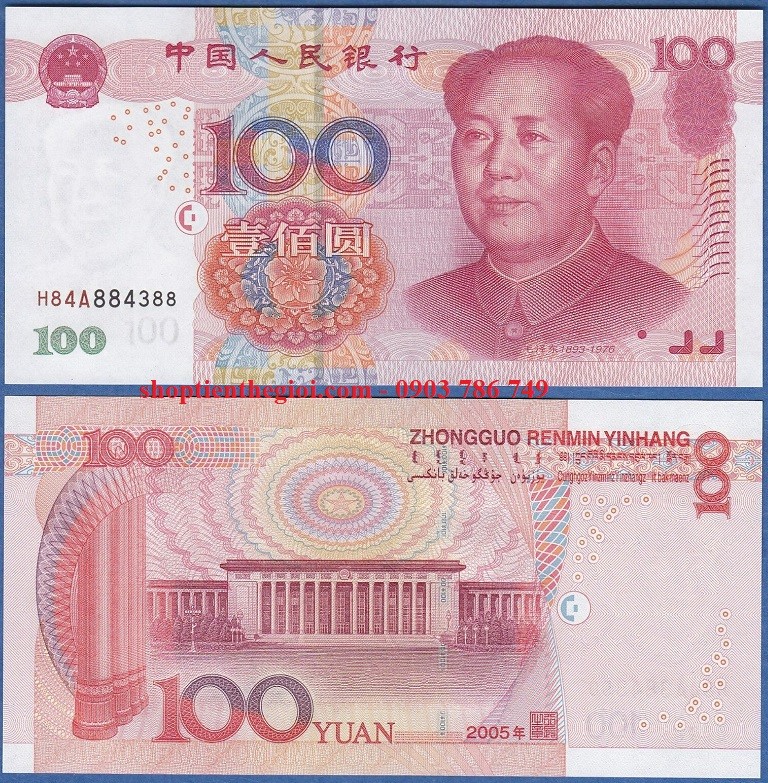 |
| Photo: shoptienthegioi |
There are two varieties of the 100-yuan banknote: the gray-blue one was introduced in 1990, and the red one was first printed in 1999. The obverse of the 1990-style note features the likenesses of four former Chinese leaders: Mao Zedong, Zhou Enlai, Liu Shaoqi, and ZhuDe. The reverse features the South Chinese mountain range Jinggangshan. There are currently very few 100-yuan paper notes in circulation in China that date back to 1990.
The 1999-style 100-yuan notes feature a portrait of Mao Zedong on the obverse and an image of the Great Hall of the People on the reverse.
50 Yuan (Reverse Image: The Potala Palace, Lhasa)
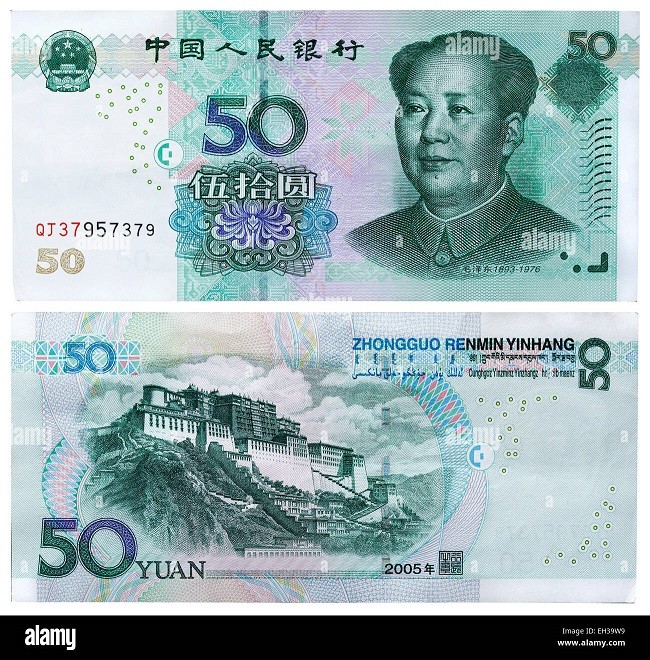 |
| Photo: alamy |
There are two varieties of the 50-yuan banknote: the pink and yellow one was introduced in 1990, and the green one followed in 1999. The Hukou Waterfall on the Yellow River is depicted on the reverse of the former type, which features portraits of a worker, a farmer, and an intellectual on the obverse. Currently, the 1999-style banknote is far more commonly used. Mao Zedong's portrait appears on its obverse, while the iconic Potala Palace in Lhasa is depicted on its reverse.
20 Yuan (Reverse Image: The Li River, Guilin)
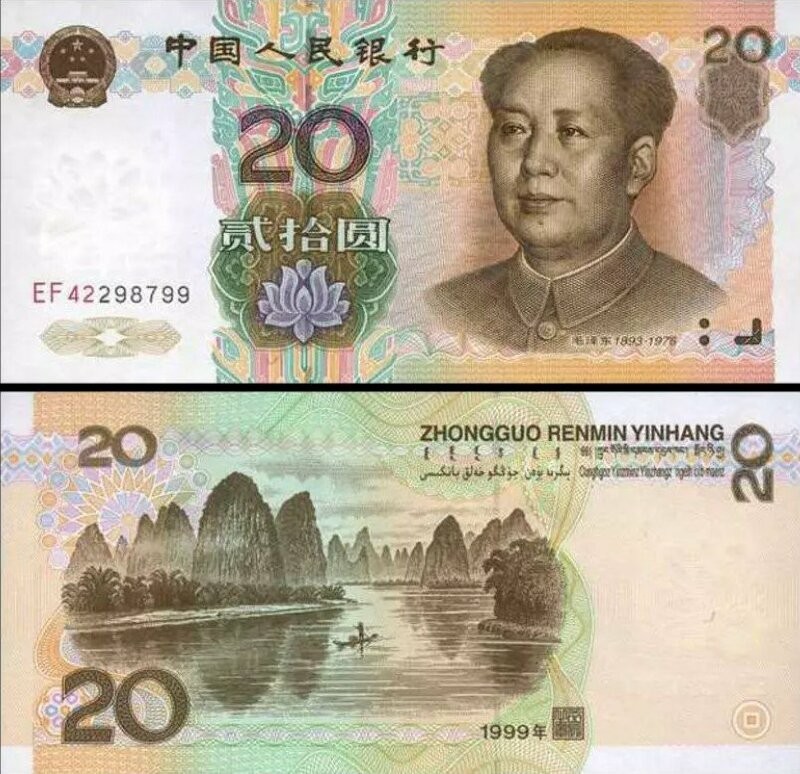 |
| Photo: inkythuatso |
The 20-yuan banknote, which debuted in 1999, has a portrait of Mao Zedong and its reverse features a drawing of the scenic Lijiang River in South China.
10 Yuan (Reverse Image: The Yangtze Three Gorges, Central China)
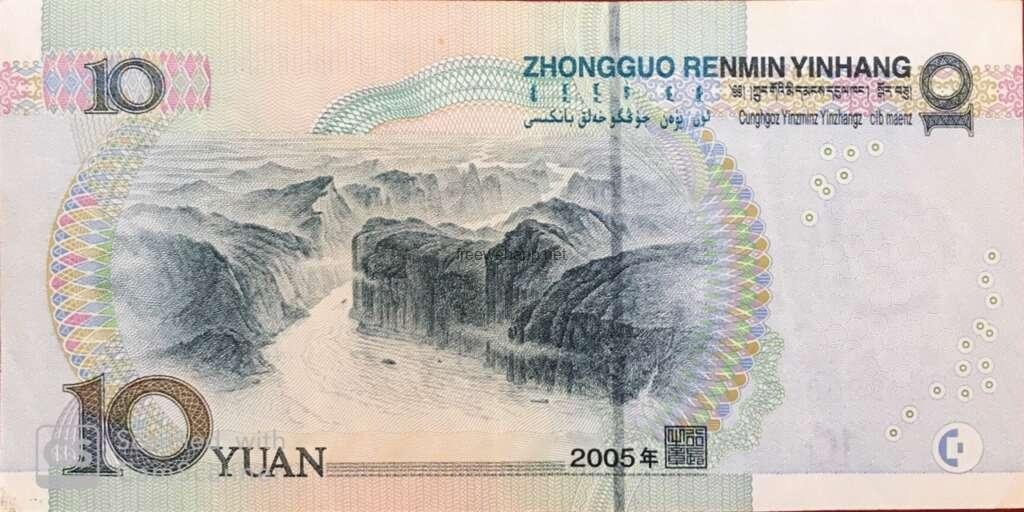 |
| Photo: tienvabac |
There are two varieties of the 10-yuan banknote as well: the regular one was introduced in 1999, and the special note was released on July 8 in honor of the Beijing Olympic Games by the central bank. The standard one has a picture of Mao Zedong on the obverse and a drawing of the picturesque Three Gorges on the reverse. The obverse of the July 8 special banknote features an image of the National Stadium, also known as the Bird's Nest, while the reverse is decorated with images of athletes, the Arabic numeral "2008," and the well-known ancient Greek marble statue of Discobolus, a discus thrower.
5 Yuan (Reverse Image: Mount Tai, Shandong Province)
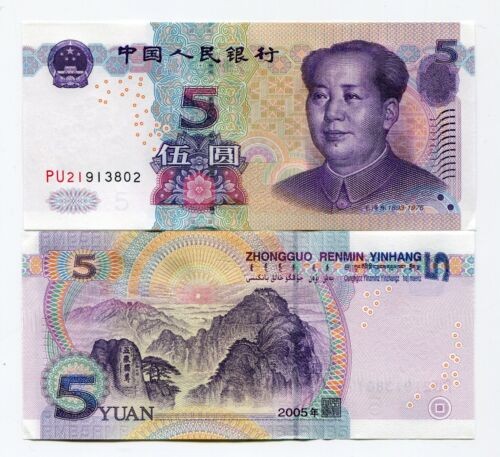 |
| Photo: ebay |
There are two varieties of the 5-yuan banknote as well: the brown one was designed and released in 1980, and the purple one in 1999. The reverse of the 1980-type features a picturesque image of the Yangtze River, the longest in the nation, while the obverse features a portrait of two members of the minority community, a Muslim man and a Tibetan woman. The 1999-type coin features a portrait of Mao Zedong on the obverse and Taishan Maintain, a mountain in Shandong province, east China, on the reverse. UNESCO has designated Taishan Maintain as a piece of global natural and cultural heritage.
1 Yuan (Reverse Image: “Three Ponds Reflecting the Moon”, West Lake, Hangzhou)
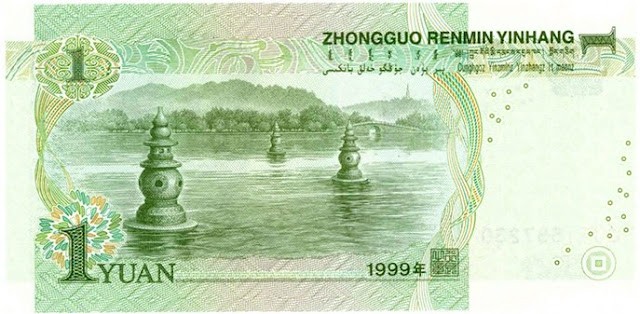 |
| Photo: Google site |
The green-colored banknote of ¥1 Yuan has the portrait of Mao Zedong on the front side, along with an orchid flower. The backside of the 1 Renminbi note shows a view of the Three Pools Mirroring the Moon, in West Lake, Hangzhou.
5 Jiao and 1 Jiao (Front: Emblem of the PRC, Reverse Images: Chinese Minority Faces)
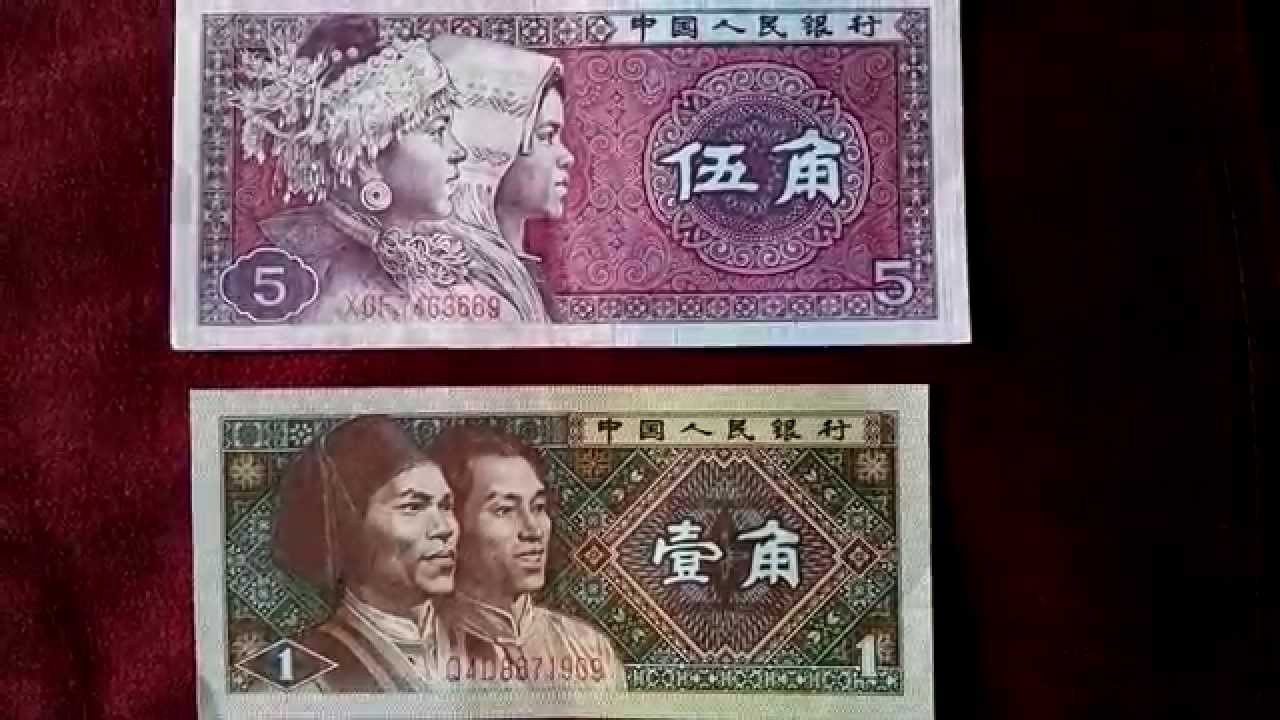 |
| Photo: traiphieuchinhphu |
Ten jiao are equal to one yuan. Ten fen, or pennies in English, make up one jiao. The 100 yuan note is the largest denomination of the renminbi. The one fen coin or note is the smallest. Coins and notes both bear the RMB logo. There are ten different paper denominations: yuan, jiao, fen, and 100, 50, 20, 10, 5, 2, and 1 yuan. Coins come in the following denominations: 1 yuan, 5, 2, and 1 jiao, and 5, 2, and 1 fen.
Who are on Chinese Coins?
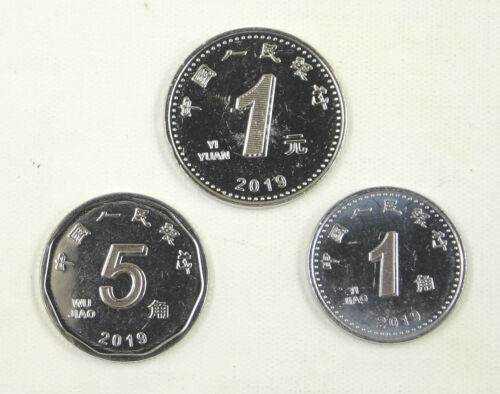 |
| Photo: ebay |
1 Yuan (Reverse Image: Chrysanthemum)
5 Jiao (Reverse Image: Lotus)
1 Jiao (Reverse Image: Orchid)
Facts you (probably) did not know about Chinese money1. The first bronze pieces that were used in China as currency, around the 7th-6th centuries BC, were spade-shaped coins. 2. In the fifth or fourth century BC, the first round coin was created. Subsequently, China's coinage experienced a shift in payment methods, resulting in the introduction of a new coin design: a circular disc with a central hole. Up until the 20th century, the fundamental design of Chinese coins was the holed disc. 3. The coin's weight and value were the same at first. But starting in the second century BC, the coin's actual content decreased while its central hole grew. After that, it was typical for there to be a discrepancy between the metal's face value and real value. 4. The first occurrence of inflation in China was in the 2nd century BC, due to the massive recruitment of workers building the Great Wall, and a series of wars. 5. Due to the low value of a single coin, it was customary to form a string of 1000 coins into a purchasing unit. 6. The old Chinese currency served only as a medium of exchange and a gauge of value. Stated differently, the Chinese yuan's low value over centuries was due to its lack of intended use as a store of value. The Chinese held that money, like blood in the human body, had to flow throughout the social structure. 7. The first time paper money was used was in China in the 9th century. 8. Marco Polo was impressed by the use of paper money when he first arrived in China in the thirteenth century. "All these pieces of paper are issued with as much solemnity and authority as if they were of pure gold or silver," he wrote in his journey records, describing this incredible innovation. People in Italy did not accept his tales of paper money in China when he returned. It was centuries before the West began printing banknotes. 9. A technique for identifying fakes was created by the Chinese. They imposed stringent rules and concealed secret markings on the banknotes. The death penalty was applied to forgers, but in addition to the criminal's property, the informant was rewarded. 10. Offerings are traditionally made in remembrance of one's ancestors in Chinese culture. Burning "Hell banknotes," an homage to the King of Hell, is one of these offerings, which is intended to guarantee that the spirits are well-treated in the afterlife. Millions of these paper notes have been burned annually to commemorate the Chinese New Year celebration since the 19th century. |
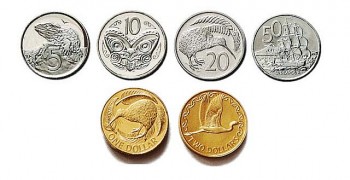 Who Are On New Zealand’s Money Of All Time Who Are On New Zealand’s Money Of All Time Famous faces are featured on New Zealand’s banknotes and coins. Check out this article to know who they are. |
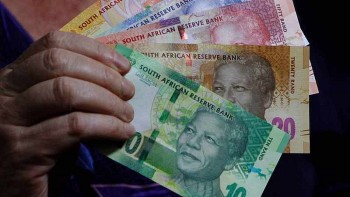 Who Are On South Africa’s Money Of All Time Who Are On South Africa’s Money Of All Time Who do you think of when you mention South Africa? Most of us think about Nelson Mandela. He is one of faces featured on South ... |
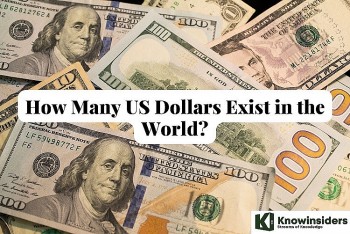 How Many US Dollars Exist in the World? How Many US Dollars Exist in the World? The dollar is the legal tender in the United States. This article list the value and volume of U.S. currency in circulation today. |























